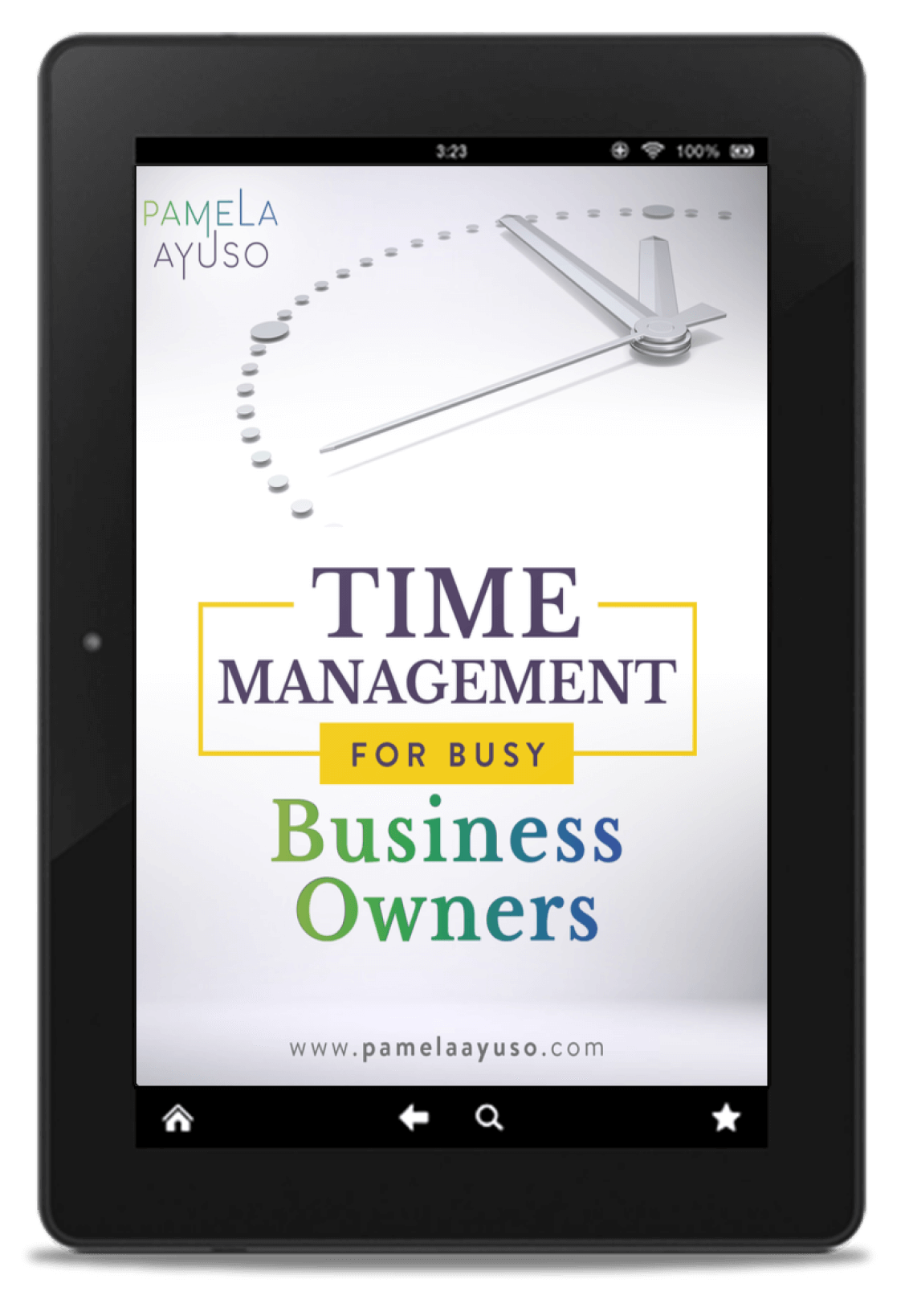It is time to invest in your education and development. There may be a course you have been meaning to take or a conference you have wanted to attend. Do not wait any longer, as you are your most precious asset, and you should invest in yourself fully. You and your growth are all you can truly control after all....
Read MoreWhat i’m writing about

How to Empty Your Mind for Better Problem Solving & Performance
I am convinced that one of the biggest threats to the adult mind is the amount of everyday information we store in it. All day, our brains are sifting through thousands of to-dos and incomplete items:
-
You forgot to return your client’s call.
-
The proposal has not gone out yet.
-
Taxes are going to be due soon, and you have not prepared the documentation.
-
The printer is acting up and will have to be repaired.
-
You need to start hiring for a new marketing position.
It is relentless. The reminders do not stop until we complete the tasks. The brain’s goal is to make sure we survive, and this is one of the ways it helps us. And your brain is right: the information is useful and important.

4 Simple Steps to Fix Problems in Your Processes
Even with processes up and running in your business, you will still sometimes run into problems. Perhaps a newsletter did not go out on the date it was supposed to, or a report has missing information. It is impossible to foresee and document every single possibility in your processes.
So, what do you do when you find a gap in the way something needs to be done? You have one of two choices: you can temporarily patch it up, or you can prevent the problem from ever happening again. It pays to take the time to figure out what happened and solve the issue for the future.

Keep Growing: How to Implement What You Read
Reading business articles and books is one of the best ways to learn, keep up-to-date, and discover new ideas for growing a business. With all the resources available today, the options are endless; one can learn about any topic imaginable, and this is an opportunity for expansion.
However, reading is only half of the process. As one starts to absorb more information, there is a problem that arises: how to organize and sift through all the new ideas and information from the books and articles. It would be ideal to implement some of this new and acquired knowledge, but how can one best classify and organize all the ideas in the readings?
I have struggled with this problem myself, and have found the following steps helpful for managing and organizing the information I find within the articles and books I read.

6 Useful Ideas to Make Your Processes More Streamlined
Automating your office’s procedures comes with numerous invaluable benefits: you boost your productivity, improve accuracy, and best of all – you save time and money (read more about the benefits in The Benefits of Implementing Processes in Your Business). The ultimate goal is to move things from being manually executed to discovering and implementing improvements that streamline the firm’s activities. These small, time-saving ideas add up over time. Every bit of energy you can save will allow space for growth and improved development.
So how exactly do you get started? First, study what you are already doing on a daily basis. Try to change only one thing at a time. As you start analyzing how your business runs, you may discover some easy fixes

The Valuable Cloud Software My Company First Implemented
The Cloud can be a blessing to a small company.
Just ten years ago, the most viable options available to smaller organizations were lesser-quality systems that needed to be shared via a local server and maintained by an IT person. Because they could not afford an effective on-site system, most of these firms would just keep everything on Excel and share documents on an internal server. It was a very frustrating and now outdated way to work.
Our journey as a firm was similar to that of many other small companies. The following is a short account of the problems we faced in each of our departments with the corresponding solutions we used to solve them with the help of Cloud software.

Invest in the Future to Avoid Potential Roadblocks
Have you ever developed a brilliant way of doing something and then forgotten the path you took to arrive there in the first place?
Whenever we do something for the first time, we are making mistakes and learning as we go. We may invest time doing one task but then realize that the process did not work. So, we try a different way again, and this time, it might lead in the right direction. Eventually, the puzzle comes together, and the goal is achieved.

How to Properly Delegate Work to Your First Hire
Sooner or later, your business will grow to the level where you alone can no longer get everything done. It is inevitable: to grow and stay on track with business demands, more help is required.
Hiring a firm’s first employee is a big change that is both positive and challenging. The new hire will not only take on part of the workload but will hopefully bring new skills and practices that weren’t previously available at the firm.
The goal is to train and set the new hire up to be as successful as possible.

Valuable Ideas from Google for Growth and Innovation: Part 2
This article is Part 2 of my review and insights on How Google Works by Eric Schmidt and Jonathan Rosenberg.
The first part of my review highlighted some of Google’s best ideas on organization, access to information, and interviewing. In this article, I share some of my favorite quotes from their guide on goal-sharing, communication, resources, and innovation.
By no means is this a comprehensive review of the book, but in case you have not had a chance a to read it, here are some of the ideas I found most striking as a business manager myself. As soon as you get the opportunity, I highly recommend it; I predict Google’s ideas will have a significant impact on any organization.

Valuable Ideas from Google for Growth and Innovation: Part 1
How Google Works by Eric Schmidt and Jonathan Rosenberg is a New York Times bestselling book published in 2014. From 2001 to 2011, Eric Schmidt was the CEO of Google, and Jonathan Rosenberg was the Senior Vice President of Products at Google and resigned in 2011. In the book, the authors share the lessons they learned in management as they and others built and grew this internet behemoth.
When I first read How Google Works, I was surprised by the many brilliant ideas for business strategy and organization in the book. Although following their example and implementing everything they propose would take tremendous attention and work, I think that just taking a few of their ideas could have a big impact on any business. I highly recommend reading the publication for anyone interested in learning some of Google’s secrets and backstories.

How to Effectively Keep Track of Everything You Have to Do
Days are full of activity and go by in the blink of an eye. Between one thing and the next, it will show if ideas and work are not managed properly. We will miss a deadline, forget to call a big client back or drop the ball on an important assignment. Executing is key but so is following-up to ensure that everything that was needed to be done was done on time.
Fear not: there are ways to combat this. All that is necessary is developing a system to keep track of all your to-do list items and ensuring the system works to follow through on all these tasks.

NetSuite: How to Select the Best ERP
Three years ago, we found we had outgrown our accounting system. When we first started, we managed all our accounting activity on an Excel spreadsheet. We then implemented Zoho Books, an entry-level accounting system, and had been working with it for four years. At the time of its implementation, it had been a major upgrade, and I consider it a great starter accounting software system. A few years later, however, we found we were ready yet again for more advanced functions.
Selecting a new system was not straightforward or easy. We are real estate developers, and our industry has quirks that don’t fit into standard business models. For instance, we do not only sell, but we also lease properties. Also, our manufacturing process varies from building to building, and sometimes from apartment type to apartment type.

How to Empty Your Mind for Better Problem Solving & Performance
I am convinced that one of the biggest threats to the adult mind is the amount of everyday information we store in it. All day, our brains are sifting through thousands of to-dos and incomplete items:
-
You forgot to return your client’s call.
-
The proposal has not gone out yet.
-
Taxes are going to be due soon, and you have not prepared the documentation.
-
The printer is acting up and will have to be repaired.
-
You need to start hiring for a new marketing position.
It is relentless. The reminders do not stop until we complete the tasks. The brain’s goal is to make sure we survive, and this is one of the ways it helps us. And your brain is right: the information is useful and important.

4 Simple Steps to Fix Problems in Your Processes
Even with processes up and running in your business, you will still sometimes run into problems. Perhaps a newsletter did not go out on the date it was supposed to, or a report has missing information. It is impossible to foresee and document every single possibility in your processes.
So, what do you do when you find a gap in the way something needs to be done? You have one of two choices: you can temporarily patch it up, or you can prevent the problem from ever happening again. It pays to take the time to figure out what happened and solve the issue for the future.

Keep Growing: How to Implement What You Read
Reading business articles and books is one of the best ways to learn, keep up-to-date, and discover new ideas for growing a business. With all the resources available today, the options are endless; one can learn about any topic imaginable, and this is an opportunity for expansion.
However, reading is only half of the process. As one starts to absorb more information, there is a problem that arises: how to organize and sift through all the new ideas and information from the books and articles. It would be ideal to implement some of this new and acquired knowledge, but how can one best classify and organize all the ideas in the readings?
I have struggled with this problem myself, and have found the following steps helpful for managing and organizing the information I find within the articles and books I read.

6 Useful Ideas to Make Your Processes More Streamlined
Automating your office’s procedures comes with numerous invaluable benefits: you boost your productivity, improve accuracy, and best of all – you save time and money (read more about the benefits in The Benefits of Implementing Processes in Your Business). The ultimate goal is to move things from being manually executed to discovering and implementing improvements that streamline the firm’s activities. These small, time-saving ideas add up over time. Every bit of energy you can save will allow space for growth and improved development.
So how exactly do you get started? First, study what you are already doing on a daily basis. Try to change only one thing at a time. As you start analyzing how your business runs, you may discover some easy fixes

The Valuable Cloud Software My Company First Implemented
The Cloud can be a blessing to a small company.
Just ten years ago, the most viable options available to smaller organizations were lesser-quality systems that needed to be shared via a local server and maintained by an IT person. Because they could not afford an effective on-site system, most of these firms would just keep everything on Excel and share documents on an internal server. It was a very frustrating and now outdated way to work.
Our journey as a firm was similar to that of many other small companies. The following is a short account of the problems we faced in each of our departments with the corresponding solutions we used to solve them with the help of Cloud software.

Invest in the Future to Avoid Potential Roadblocks
Have you ever developed a brilliant way of doing something and then forgotten the path you took to arrive there in the first place?
Whenever we do something for the first time, we are making mistakes and learning as we go. We may invest time doing one task but then realize that the process did not work. So, we try a different way again, and this time, it might lead in the right direction. Eventually, the puzzle comes together, and the goal is achieved.

How to Properly Delegate Work to Your First Hire
Sooner or later, your business will grow to the level where you alone can no longer get everything done. It is inevitable: to grow and stay on track with business demands, more help is required.
Hiring a firm’s first employee is a big change that is both positive and challenging. The new hire will not only take on part of the workload but will hopefully bring new skills and practices that weren’t previously available at the firm.
The goal is to train and set the new hire up to be as successful as possible.

Valuable Ideas from Google for Growth and Innovation: Part 2
This article is Part 2 of my review and insights on How Google Works by Eric Schmidt and Jonathan Rosenberg.
The first part of my review highlighted some of Google’s best ideas on organization, access to information, and interviewing. In this article, I share some of my favorite quotes from their guide on goal-sharing, communication, resources, and innovation.
By no means is this a comprehensive review of the book, but in case you have not had a chance a to read it, here are some of the ideas I found most striking as a business manager myself. As soon as you get the opportunity, I highly recommend it; I predict Google’s ideas will have a significant impact on any organization.

Valuable Ideas from Google for Growth and Innovation: Part 1
How Google Works by Eric Schmidt and Jonathan Rosenberg is a New York Times bestselling book published in 2014. From 2001 to 2011, Eric Schmidt was the CEO of Google, and Jonathan Rosenberg was the Senior Vice President of Products at Google and resigned in 2011. In the book, the authors share the lessons they learned in management as they and others built and grew this internet behemoth.
When I first read How Google Works, I was surprised by the many brilliant ideas for business strategy and organization in the book. Although following their example and implementing everything they propose would take tremendous attention and work, I think that just taking a few of their ideas could have a big impact on any business. I highly recommend reading the publication for anyone interested in learning some of Google’s secrets and backstories.
Explore


Pamela Ayuso is an author and the co-founder and CEO of Celaque. She is a real estate entrepreneur and developer who has executive leadership experience in two of the most successful real estate developers in Honduras — managing operations at Alianza and leading Celaque. Celaque develops office and residential buildings and manages a broad portfolio of properties. Pamela’s focus is on growing Celaque into a model for the 21st-century company.
In addition to her role as CEO at Celaque, Pamela is a writer that offers practical business and personal development insights for other entrepreneurs and business leaders on her blog and LinkedIn. She published her first children’s book in 2019, Alicia and Bunnie Paint a Mural.
Improve Your Time MANAGEMENT
Join our mailing list and receive our free Time Management for Busy Business Owners e-book.
Pamela Ayuso will use the information on this form to be in touch with you and provide updates. You can change your mind at any time by clicking the unsubscribe link in the footer of any email you receive from us, or by contacting us at pamela@pamelaayuso.com. We will treat your information with respect. We use cookies and similar technologies to run this website and help us understand how you use it. For more information, read our Privacy Policy.


ABOUT THE AUTHOR
Pamela Ayuso is an author and the co-founder and CEO of Celaque. She is a real estate entrepreneur and developer who has executive leadership experience in two of the most successful real estate developers in Honduras — managing operations at Alianza and leading Celaque. Celaque develops office and residential buildings and manages a broad portfolio of properties. Pamela’s focus is on growing Celaque into a model for the 21st-century company.
In addition to her role as CEO at Celaque, Pamela is a writer that offers practical business and personal development insights for other entrepreneurs and business leaders on her blog and LinkedIn. She published her first children’s book in 2019, Alicia and Bunnie Paint a Mural.


ABOUT THE AUTHOR
Pamela Ayuso is an author and the co-founder and CEO of Celaque. She is a real estate entrepreneur and developer who has executive leadership experience in two of the most successful real estate developers in Honduras — managing operations at Alianza and leading Celaque. Celaque develops office and residential buildings and manages a broad portfolio of properties. Pamela’s focus is on growing Celaque into a model for the 21st-century company.
In addition to her role as CEO at Celaque, Pamela is the author of Amazon best-selling book, Heptagram: The 7-Pillar Business Design System for the 21st Century. She offers practical business and personal development insights for other entrepreneurs and business leaders on her blog and LinkedIn. Her husband and her three wonderful daughters inspired the story of her first children’s book, Alicia and Bunnie Paint a Mural.

Pamela Ayuso will use the information on this form to be in touch with you and provide updates. You can change your mind at any time by clicking the unsubscribe link in the footer of any email you receive from us, or by contacting us at contact@pamelaayuso.com. We will treat your information with respect. We use cookies and similar technologies to run this website and help us understand how you use it. For more information, read our Privacy Policy.
Looking for something else? Search to find more practical tips from Pamela.

